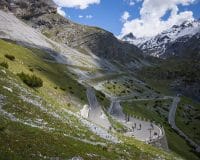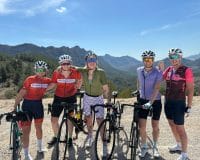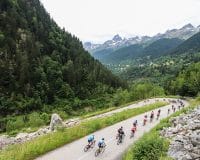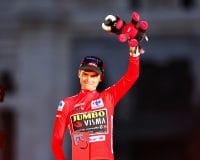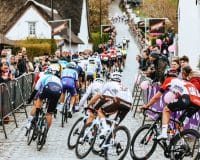The biggest sportive of the year is the Etape du Tour. This classic event is celebrating its 27th year in 2020 with a stunning and unique route. Choosing to ride the Etape is a big commitment requiring months of training, so here is everything you need to know before making the leap and signing up:
1) How do I train for the Etape
Most riders make the mistake of thinking all they need is to push themselves on longer and longer weekend rides to prepare for the Etape. The key is consistency. “Our bodies are very smart and if we train regularly our body understands what we are trying to achieve,” says leading coach Jon Fearne. Weekly rides leave too long a gap between sessions, so you won’t have the same benefit of regular, consistent sessions.
2) Etape du Tour 2020 registration tips
The very start of your Etape journey is also one of your most important. What you put on your registration form can result in what time you start and who with. The first group set off at 7am and then every 8 minutes another 1,000 riders depart until the final group leave just before 9am. Your start time is determined by previous Etape times and the expected time you put on this form. If you are riding with friends and want to be in the same pen, make sure you put in the same expected time when registering.
3) Things to plan early
Some things you can’t leave to the last minute. As you start your training plan, start to get the following right:
- Find a nutrition plan that works for you. There is nothing worse than trying a new gel or bar and struggling with your stomach all ride. Read our event day nutrition blog here.
- Lose some weight. You will appreciate it on the long climbs.
- Get a bike fit, if you are doing a lot of miles this is a crucial investment.
4) Getting Your Bike to the Etape
If you are flying to Nice for the Etape du Tour 2020, you have three options. You can bring your bike on the plane but there is a risk of the airline losing it. You can rent a bike and there are great quality bikes available now across Europe, or you can get a door to door bike transfer service. Each has benefits and drawbacks; our choice is a door to door transfer.

5) Where to Stay
Like most Etape du Tours, the start and finish are in different places, so the big question is, where to stay? Nice is the obvious option, the French city offers a plentiful selection of restaurants, bars and accommodation. If you book directly with Sportive Breaks, entries will be delivered to your hotel.
6) What to bring with you
Aside from the obvious (shoes, helmet, tea, chocolate hobnobs), you need to pay close attention to the weather to see what conditions are like. The Etape often held in extremes, but even on a hot day the early start should be cool so you will need the right layers. A lightweight, waterproof jacket is useful as is a gilet and arm warmers. If its due to be colder, be prepared. As per point 3, get used to a nutrition brand and bring gels / bars with you. Finally, to collect your entry to need your race number printed out and a signed medical certificate.
7) Race day timings
It’s an early start at the Etape. The first group go off at 7am and pens open from 6am. The earlier you get to the pen, the closer you will be to the start of your pen. Best practice is to have a decent breakfast 2 hours before departure.
8) Avoiding the Broom Wagon
The broom wagon starts shortly after the last the last rider at 9am. The job of the broom is to sweep up slow riders so they can re-open the roads with as little disruption as possible. Riders swept up can be in the bus for quite a long time as it drops you off at the finish. The first key to avoiding it is getting a starting pen closer to the front. Do this by selecting a quicker finish time when signing up. On race day, don’t stress on speed. If you get into your rhythm, you will be fine so find a group at your speed on the flats, don’t stay too long on the feeds and keep going on the climbs. Most entrants make it to the end, if you have done your training and been smart on the day.
9) Feed stations
The route details come out around 2 weeks before the Etape when the road book is published. You will see a link to this on your ASO page. This will have details of the feed and mechanical support stops. Typically, there are feeds every 30-40km and in key parts of climbs (either at the bottom or top of the big climbs). The most important point it to make sure you are eating and drinking enough and never risking running out of water so you will need to stop at most feeds for this.
10) Finishing line
The finish is a great sight for most. The exact location in Le Grand Bornand will be announced with the road book but will be somewhere large enough for 15,000 riders. You will get your medal and any other goodies and there should be an area with drinks. If you are staying in Le Grand Bornand, the shower will be calling and it’s much nicer to celebrate when you have refreshed.
Etape du Tour 2020
If you are looking for a travel package to prepare yourself sufficiently for this year’s race, then we still have packages available from only £499.50. Find out more here.*
*unfortunately, sportive entries are not included in our remaining packages


